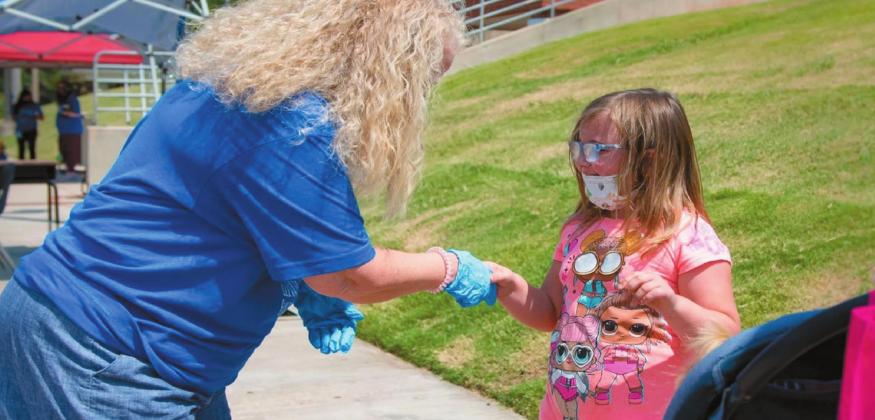As COVID-19 cases and deaths continue to mount across the state and country, more than 65% of students in Oklahoma’s 50 largest school districts are being given the option of returning to in-person learning.
An Oklahoma Watch review of school re-opening policies shows a patchwork of strategies and approaches towards reopening amid an unprecedented global pandemic.
The broad range of policies, from encouraging traditional in-person schooling to only offering virtual classes for at least the start of the year, showcase the confusion and tough decisions school officials and parents are making across the state.
For many of the state’s larger school districts, located typically in metro areas, the decision came down to a more cautious wait-and-see approach.
“It is important to understand that navigating the pandemic is complicated and there is not a simple answer for any situation,” Norman Public Schools Superintendent Nick Migliorino wrote in a letter to students and parents last week addressing his districts decision to return with all virtual classes until local cases fall to an appropriate level.
“While we are encouraged by a recent decline in local Covid-19 cases, there are a variety of factors that must be considered as we make decisions that impact students, teachers and their families.”
Joining Norman Public Schools, school districts in Oklahoma City, Tulsa, Putnam City, Jenks, Owasso and Western Heights will also begin classes this week or next with only remote-learning models. Students in those six schools make up about 21% of the state’s total (non-virtual charter school) K-12 enrollment.
The majority of the other school district policies reviewed by Oklahoma Watch are using hybrid models where students and parents are given the option of enrolling in virtual learning. But in most of these districts, students are being encouraged to return to in-person learning, often after receiving feedback from parents.
In announcing its hybrid model, Union Public Schools cited a survey where of the 2,600 parents who responded, two-thirds said they wanted their child to attend inperson.
“Please know that the health and safety of our students and staff continues to be our number one priority,” Kirt Hartzler, the superintendent of the district, wrote in a letter to parents.
Mask Requirements Also Differ
Among those allowing face-to-face classroom learning at the start of the year, school districts are also taking different approaches on whether to require face masks for all or some students.
Oklahoma Watch’s review of reopening policies for the 50 largest school districts shows nearly half are mandating all teachers, staff and students — with the exception of kindergarteners — to wear masks inside schools, including in classrooms. Sixteen school districts, meanwhile, require some students (usually fourth grade and above) to wear the masks and 10 currently do not require masks for classroom learning.
In some of these districts, teachers will be given the option of requiring students to wear masks in their classrooms.
In others, such as for Guthrie Public Schools, the mask requirements are tied to the Oklahoma State Department of Health’s color-coded COVID-19 alert map and could be activated if cases rise in their community.
Many of the schools without a full mask mandate, however, will still require masks for certain times.
In Bixby, for instance, masks are “highly recommended” for students in classrooms and school buildings. But they still will be required on buses, where social distancing is especially difficult.
As it has been the case with the general public, the use of masks — which the Centers for Disease Control and Preventions says is one of the most effective ways to combat the spread of the virus, particularly among healthy asymptomatic people who could unknowingly introduce to their family or wider social circle — have been a source of contention in the state.
Earlier this summer, the State Board of Education declined to set a statewide mask mandate and instead issued a set of recommendations to school districts.
State Superintendent for Public Instruction Joy Hofmeister is among the board members who wanted a stricter policy from the state.
During a public appearance last week with Gov. Kevin Stitt, who prefers allowing districts to set their own policies, Hoffmeister again made her case for a statewide mask requirement.
“If we’re serious about having in-person learning, then school districts have to require masks,” she said. “We will not be able to stay open. And, I want to see our kids able to be in class with their teachers in a safer environment.”
Though most schools have started their fall semester, many districts are acknowledging that changes to their operations and policies could come as conditions, including the spread of the virus in their communities or even schools, remain in flux.
School Re-Opening Policies
A tally from KGOU identified more than 60 school districts as of Monday that have already disclosed cases among students, teachers or staff since opening their doors.
While in many of theses instances school operations have largely been unin terrupted, except for notifying and quarantining close contacts of those cases, it has resulted in some temporary closures.
Grove Public Schools, located in far northeast Oklahoma, was among those that briefly transitioned to its back-up distance learning model after it announced Aug. 19 that several students and teachers tested positive with COVID-19. In-person classes and extra circulator actives resumed a few days later.
Other school districts, meanwhile, are asking parents and students to prepare for the unpredictable in the coming weeks and months.

